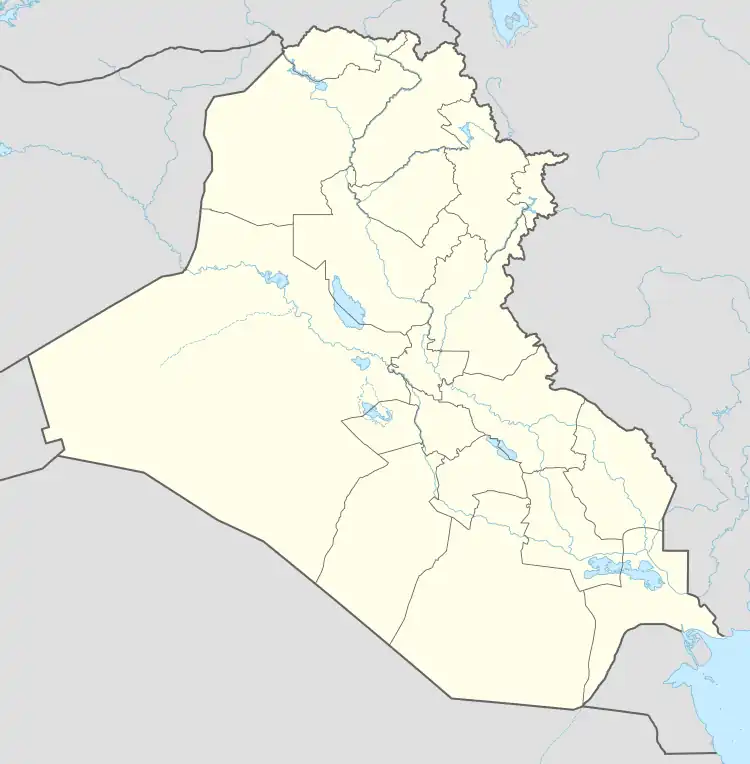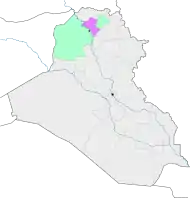Baadre
Baedrê, باعەدرێ | |
|---|---|
Town | |
 | |
 Baadre Location in Iraq | |
| Coordinates: 36°43′05″N 43°15′15″E / 36.71806°N 43.25417°E | |
| Country | |
| Region | |
| Governorate | Dohuk Governorate |
| District | Shekhan District |
| Government | |
| • Mayor | Shamal M. Adeeb[1] |
Baadre (also written Ba'adra, Badra or Bathra, (Arabic: باعدرة/باعذرة, Kurdish: باعەدرێ, romanized: Baedrê[2][3]) is a town located in the Shekhan District of the Ninawa Governorate in northern Iraq. The town is located in the Nineveh Plains. It belongs to the disputed territories of Northern Iraq. According to 2014 statistics, Baadre's urban population was 9 835 and the rural population was 5 167.[4]
Baadre's residents are mostly Yazidis and is considered the political capital of the Yazidis[1] as it has been the base of the group's leader, the Mir.[5] The castle of the princely family is found here.[6]


History
The village was originally an Assyrian village known as Bet Edrai.[7]
In Ba'athist Iraq, the population of Baadre was deported because of their support for Peshmerga.[8]
According to Shamal Adeeb, who was the town's mayor at the time, the town and the 10 villages in the vicinity took in 2,028 displaced families totaling 12,115 people fleeing the Sinjar massacre in 2014[1]
References
- 1 2 3 Melchior, Jillian Kay (September 19, 2014). "Escape from Mount Sinjar". National Review. Retrieved October 7, 2014.
- ↑ "Li nêzîkî Şêxanê 5 kesên ji malbatekê canê xwe ji dest dan". Rûdaw (in Kurdish). 6 June 2019. Retrieved 19 December 2019.
- ↑ "چەند پرۆژەیەک لە باعەدرێ جێبەجێ دەکرێن". Kurdistan Democratic Party (in Kurdish). Retrieved 19 December 2019.
- ↑ "Demographic Survey: Kurdistan Region of Iraq - Iraq". ReliefWeb. Retrieved 2021-05-25.
- ↑ Allison, Christine (2004-02-20). "Yazidis i: General". Encyclopædia Iranica. Retrieved August 20, 2010.
There are probably some 200,000–300,000 Yazidis worldwide.
- ↑ "The Yazidi mausoleum Mîr Alî Beg in Ba'adrê". Mesopotamia. Retrieved 2021-05-25.
- ↑ Wilmhurst, David (2000). The Ecclesiastical Organization of the Church of the East, 1318-1913. p. 203.
- ↑ Spät, Eszter (2018). "Yezidi Identity Politics and Political Ambitions in the Wake of the ISIS Attack". Journal of Balkan and Near Eastern Studies. 20 (5): 427. doi:10.1080/19448953.2018.1406689. S2CID 148897618.
